Introduction
This article provides an in-depth examination of Wire Rope.
You will explore topics including:
- What is Wire Rope?
- Wire Rope manufacturing process
- metals used in Wire Rope production
- Wire Rope lubricants
- And more...
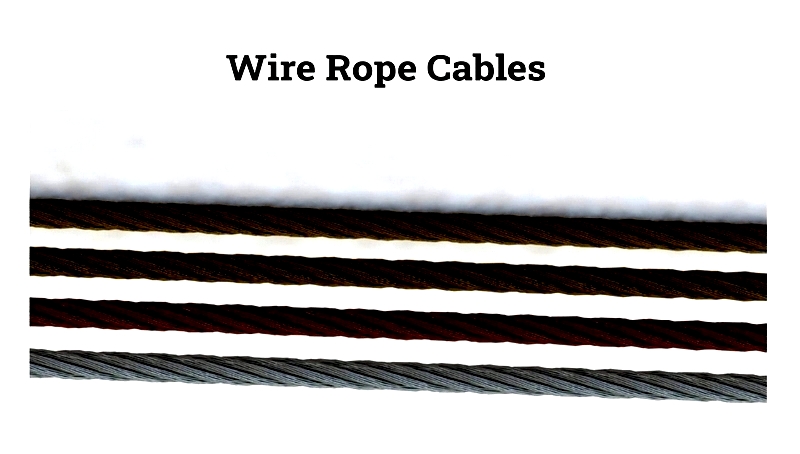
Chapter One - Understanding Wire Rope
Wire rope consists of metal strands twisted into a helix, specifically designed for lifting and transporting heavy loads. Commonly used in shipping docks, rigging, and load-bearing equipment, it connects to swivels, shackles, or hooks to ensure safe and efficient load handling.
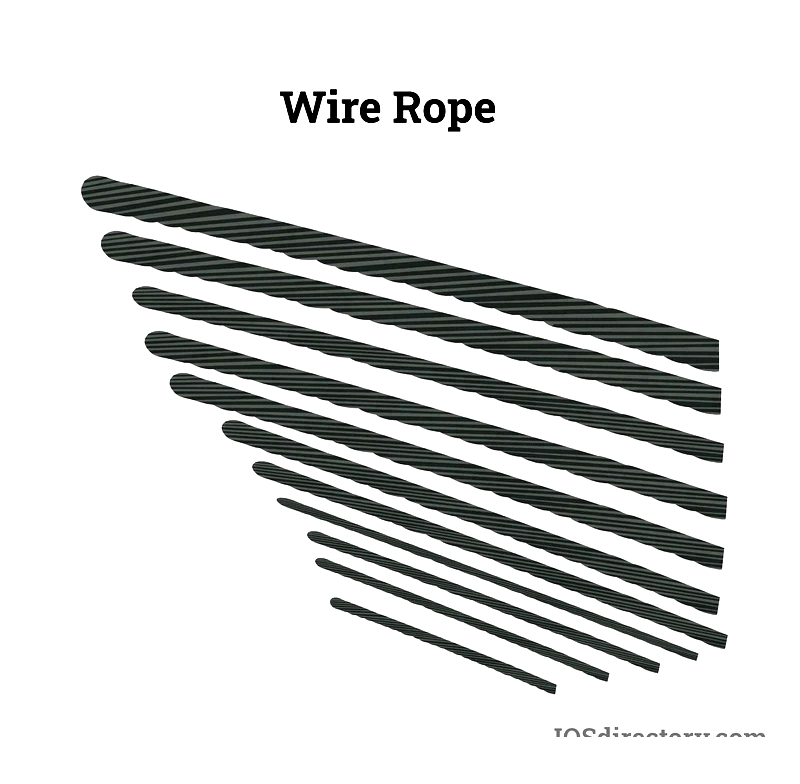
Wire rope also plays a vital role in supporting suspension bridges, elevator systems, and tower reinforcement. Its design, featuring multiple strands wrapped around a sturdy core, provides strength, flexibility, and ease of handling in applications involving bending stresses.
Wire rope designs vary in materials, wire types, and strand configurations to effectively support lifting operations and other demanding tasks.
Cable vs. Wire Rope: Key Differences
Cable and wire rope are distinct materials with unique characteristics and functions. Cable typically refers to flexible assemblies of one or more wires encased in protective sheathing, primarily used for electrical connections like power distribution and data transmission where flexibility and conductivity are crucial.
Wire rope, in contrast, features a robust structure of intertwined steel strands forming a durable cord. It excels in applications requiring exceptional strength and load resistance, making it essential for construction, maritime, and industrial settings.
The primary distinction lies in their construction and purpose. Cables are designed for electrical transmission, focusing on flexibility and conductivity, while wire ropes are engineered for mechanical strength and durability, ideal for lifting, towing, or securing heavy loads.
Both cable and wire rope play critical roles in modern technology and industry, each demonstrating unique design features and specialized applications.
Chapter Two - Wire Rope Manufacturing Process
Wire rope is a specialized mechanical assembly designed for heavy-duty lifting, rigging, hoisting, and tensioning applications. Unlike traditional wire or cable, wire rope has a complex construction—typically consisting of multiple strands of high-strength steel, stainless steel, or other metal wires twisted around a central flexible core. Each strand contains numerous wires, providing strength, durability, and flexibility. For instance, a 6x25 wire rope comprises six strands with 25 wires each, totaling 150 outer strands that work together yet independently to enhance versatility, load distribution, and fatigue resistance in demanding environments.
A key design feature is the engineered clearance between strands, allowing slight wire movement during bending or flexing. This improves performance under repeated bending cycles, making wire rope indispensable for construction cranes, elevators, winches, mining operations, bridge support cables, and various industrial and maritime applications.
The fundamental components of wire rope are individual wires, strands (wires wound around a core), and the central core itself. The combination of these elements—through wire rope fabrication or cable manufacturing—determines the final product's strength, crush resistance, flexibility, and suitability for different operating conditions.
Wire
The basic building block of wire rope is the wire, made from various materials depending on required mechanical properties like tensile strength, ductility, abrasion resistance, and corrosion protection. Carbon steel, alloy steel, stainless steel, and galvanized wires are most common in demanding environments due to their high breaking strength and durability. Specialty applications may use aluminum, nickel alloy, bronze, copper, or titanium for unique conductivity, flexibility, or environmental resistance.
Selecting the appropriate wire type is crucial—factors like grade, diameter, finish (bright, galvanized, or coated), and fatigue resistance affect suitability for material handling, cable assemblies, support systems, and structural reinforcement.
Galvanized Steel
Galvanized steel wire rope features a protective zinc coating to prevent oxidation, rust, and environmental corrosion. Its long service life and low maintenance make it popular for outdoor construction, marine applications, suspension bridges, tow cables, and general rigging where moisture exposure is a concern.
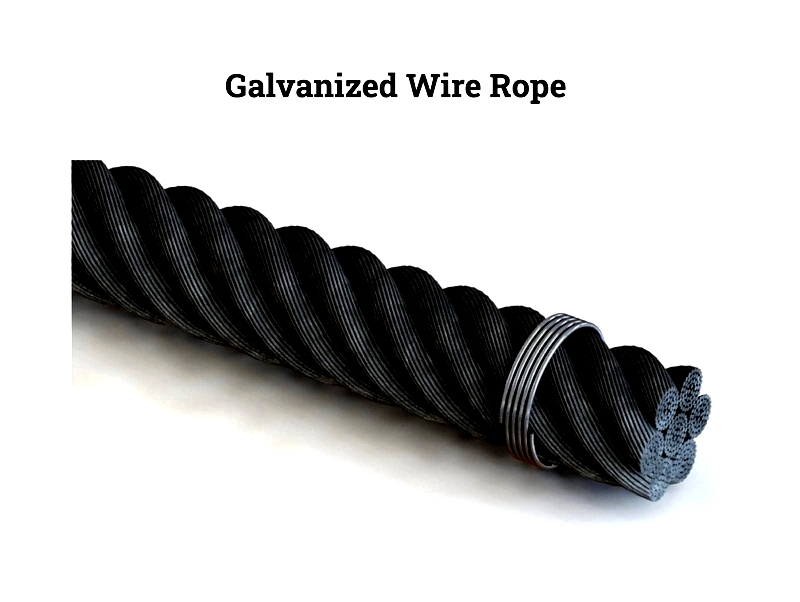
Stainless Steel
Stainless steel wire rope offers all galvanized rope benefits with superior corrosion, rust, and chemical resistance. Ideal for harsh environments like offshore drilling, food processing, medical devices, and coastal applications, its low maintenance and extended lifespan justify higher initial costs for critical applications.
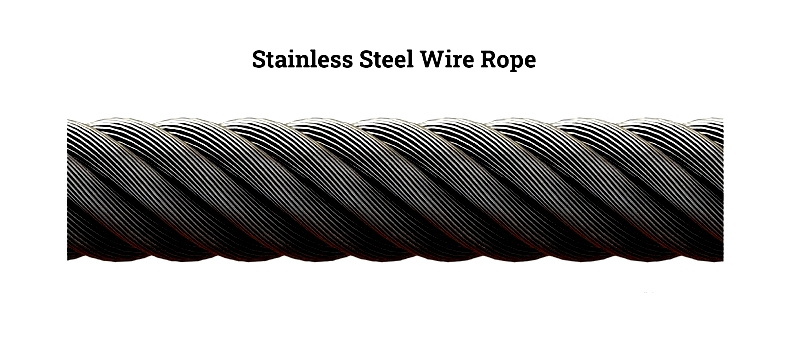
Steel
General-purpose steel wire rope, available in various sizes, diameters, and strength grades, is an industry standard in manufacturing, transportation, forestry, and heavy equipment. Its balanced properties—strength, flexibility, and durability—make it foundational for wire rope slings, engineered cable systems, and architectural support structures.
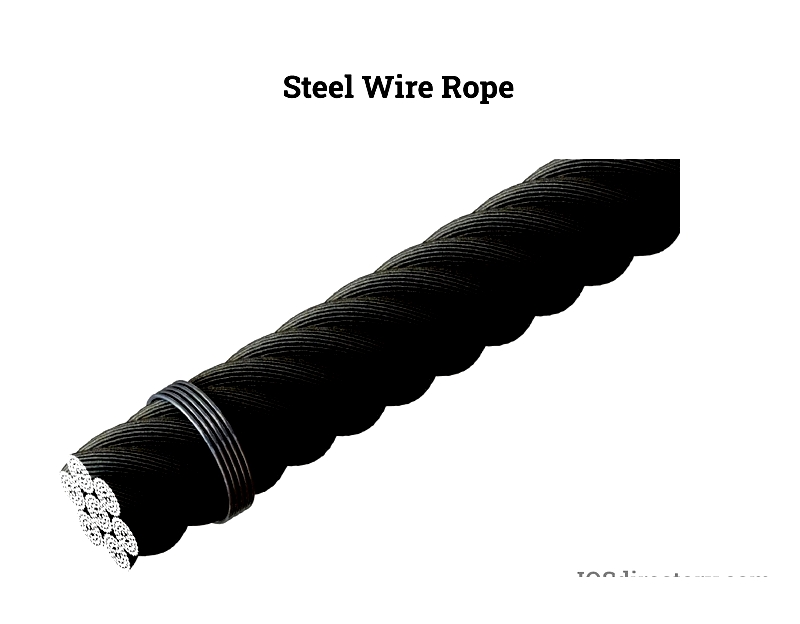
Wire Rope Identification and Nomenclature
Understanding wire rope classification is essential for manufacturing comprehension. Wire ropes are identified by strand construction, wire count per strand, lay pattern, and core type. For example, 7x19 denotes seven strands with nineteen wires each. The core may be fiber (FC), independent wire rope (IWRC), or strand (SC), each affecting flexibility, strength, and crush resistance.
Wire rope is further characterized by wire arrangement, gauge (diameter), and tensile properties. A seven-wire rope (one central strand surrounded by six) suits light-duty or flexible applications. Complex configurations like 6x36 or 8x19 offer maximum strength and fatigue resistance, commonly used in cranes, elevators, and suspension systems.
Understanding nomenclature is fundamental for specifying ropes in critical hoisting, rigging, load securement, or stay cable applications. Internal construction—how wires, strands, and cores are layered—determines mechanical properties and suitability for high-load lifting or abrasive environments.
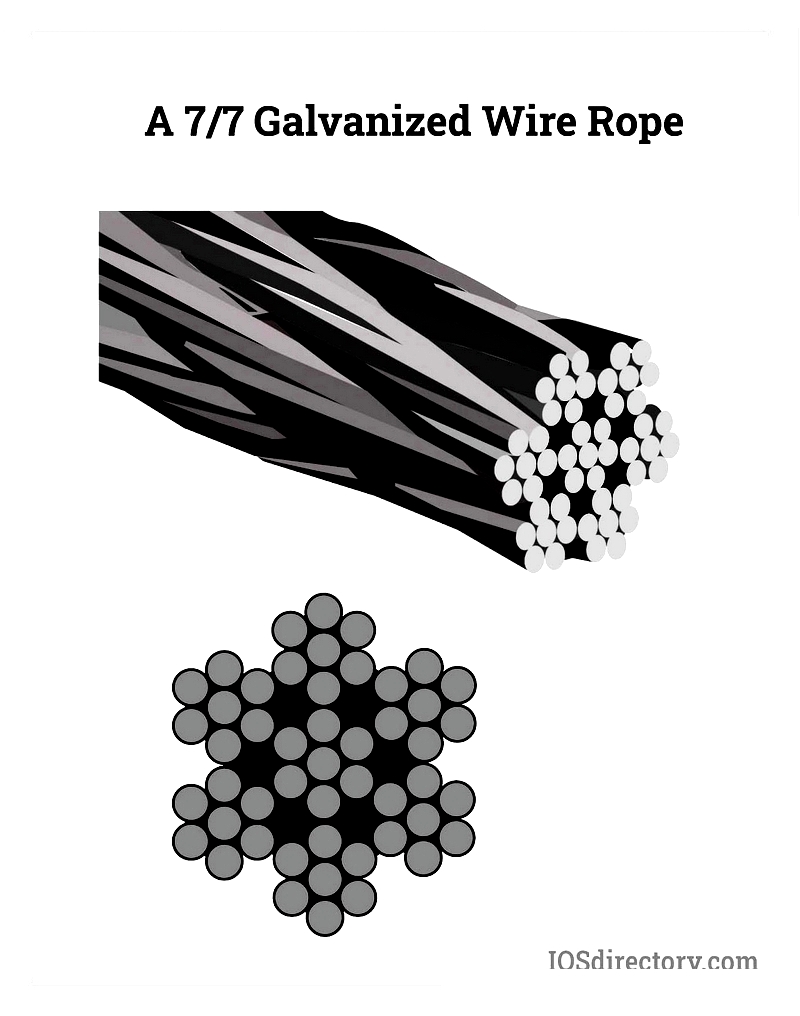
Wire Strands
Wire rope manufacturing begins with strand production. Wires are helically wound around a central core wire to form strands, with wire count determined by required breaking strength, flexibility, and application. Common constructions like 1x7, 1x19, and 1x37 balance flexibility and abrasion resistance for lifting slings, guy wires, and control cables. After forming, strands are precisely straightened for consistent performance and subsequent fabrication stages.
Strand Patterns
Strand patterns enhance specific rope properties like fatigue resistance, crush resistance, or flexibility. Common patterns include centerless, single layer, multiple layer, Seale, Warrington, filler, and flattened strands. Understanding these helps select optimal constructions for mining, marine, structural, and elevator applications with varying operational demands.
Centerless
Centerless strands feature identical diameter wires twisted helically, maximizing uniformity and surface contact for fatigue resistance in repetitive bending or vibration applications.

Single Layer
Single-layer strands wrap wires around a core wire, enhancing strength, integrity, and wear life. Ideal for overhead conductors, suspension bridges, and broadcasting towers, they provide even load distribution and improved flexibility.
Consistent wire




